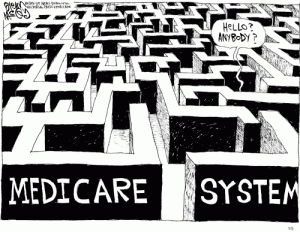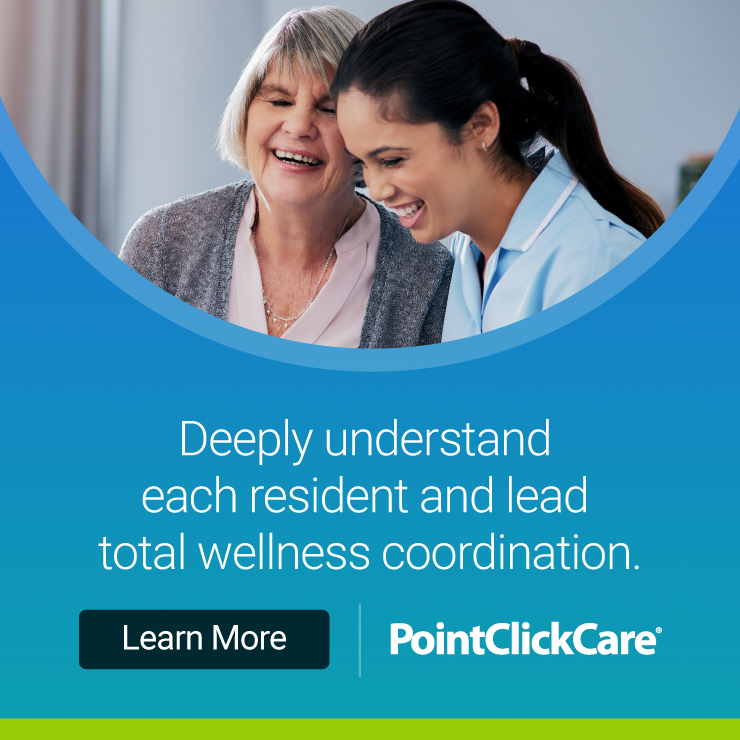Last week I challenged the Kaiser Family Foundation article that predicted an impending critical shortage of nursing home beds (You can read that article HERE). My premise was not that there is no problem, but rather that they don’t get what the real problem is. This week I want to explore with you my perspective on where the real dangers lie.
1. The system we have just evolved, there was no real planning involved.
It was created by entrepreneurs who saw an opportunity to make a profit, not-for-profits who saw a need, and regulators who reacted to some real, some potential and some imagined problems by developing regulations they hoped would protect seniors. The system continues to evolve to this day and all of the players are all heavily invested in the system staying more or less the way it is. In addition, there are hundreds of vendor companies that sell products or services to the care communities who have a vested interest in the system staying more or less the way it is. This makes it very very difficult to make meaningful change.
2. What is built is determined by reimbursement rates.
This means that, because substantial revenues can be generated from Medicare, more Medicare beds will be built. Conversely, because Medicaid rates are low, few Medicaid beds will be built.
3. The primary driver for the level of services and types of treatments that residents receive is NOT the resident’s needs.
What is delivered is primarily determined by the amount of money that can be derived from the treatments. Perhaps the most illuminating display of this was the recent 11% Medicare cut. There has not been a single organization or individual who suggested that outcomes would be impacted or seniors hurt. The outcry was only about the loss of dollars.
4. While the compensation system is well understood by providers it is stupid.
During the time residents are receiving Medicare benefits, the payments essentially always represent an excessive profit. However, this excessive profit is needed because the reimbursement received for the majority of Medicaid residents is inadequate, with private pay falling someplace in the middle.
5. The regulatory system is not effective in doing what it is supposed to do.
This is not to say there should be no regulation but it should be reasonable and relevant. The truth is that no matter how strong the regulations are, there are some terrible immoral people providing care to seniors and they do not care about the rules or the residents, only the money. What ends up happening is that complying with regulatory requirements, or at least documenting that you are complying, becomes more important than the best interests of the residents. Sometimes the goals intersect and sometime they don’t. In addition, these regulations add billions of dollars of cost to the system, costs that do not improve resident care at all.
6. The critical shortage in senior housing will be in the area of affordable middle income independent living and assisted living.
This again comes back to the idea that cash drives what is and is not built. Next week I will offer some solutions.
Don’t miss a single issue of Senior Housing Forum, subscribe today. It is free! We do not sell or share your contact information. The posts are practical and never too long. Go to the main page of Senior Housing Forum and on the right hand side you will see a place to enter your email to subscribe. You will receive notification when a new article is posted.You can unsubscribe at any time.
Finally: If you know anyone who is looking at emergency call systems I would appreciate the opportunity to talk with them about Vigil Health Solutions.








I agree with your perspective Steve.
Care coordination and staff training in behavioral interventions have been shown to reduce the cost of care…if only these services were reimbursable more seniors would benefit from them.
From LinkedIn Groups
Steve,
Good morning! I accessed your senior housing forum website and read your blog. Very nice. I saw that you operated or owned ALC’s with 16 beds or less. Is not the trend right now on smaller facilities such as the Eden Alternative, Green House Projects? The huge and humongous facilities is not just good for the patients. I toured a facility in Lubbock called Crown Point which is patterned after a Household. Has 3 households and 24 units per household. It looks great!
What’s your take on that?
:)Dionicio Rivera
From LinkedIn Groups:
Your “Defining the Problem” article is vastly intriguing. I do agree with much of it, particularly the fact that people do not tend to receive the services they need due to reimbursement issues. And the issues you discuss will continue to deepen as the number of seniors doubles and triples. I look forward to reading more about this!
Posted by Jill Bjerke, BS, DC, CAPS
Steve, your dad said I should sign up so here I am….best wishes, Lou
I am a little surprised by the bluntness of your criticisms of the current system. I liked your summary and look forward to seeing your follow-up. I trust your thorough familiarity and would love to learn at length about more examples that fit in each of these categories. Too often it seems that insiders are not transparent enough with data to enable a concerned body to sensibly address the issues.
What a great thing it is to see someone jump over all the sacred cows and lay out an accurate statement about an important matter. I wholeheartedly agree with your perspective. I’m in several conversations with professionals from various walks of senior-care-focused life, and we have ideas for addressing the need you lay out as number 6., but I wish we had more succinct answers. Senior co-housing, the popularization of Accessory Dwelling Units, informal house-sharing and service bartering systems… All of these and more are in the air. We need them all to land.
Rachel Mohlere, SRES, Senior Re-Housing Advisor
Owner, Senior Specific Consulting Group, LLC
They will land, for sure! I’m not the only one taking a close look (via training as a long term care administrator for me) at ways to make the experience of aging stay closer to family/friends and their informal care partners as well as participating as desired in community activities.
There are options out there for those elders (and elders-to-be) who are innovative enough to see the big picture, and willing to work within a framework designed to build the future.